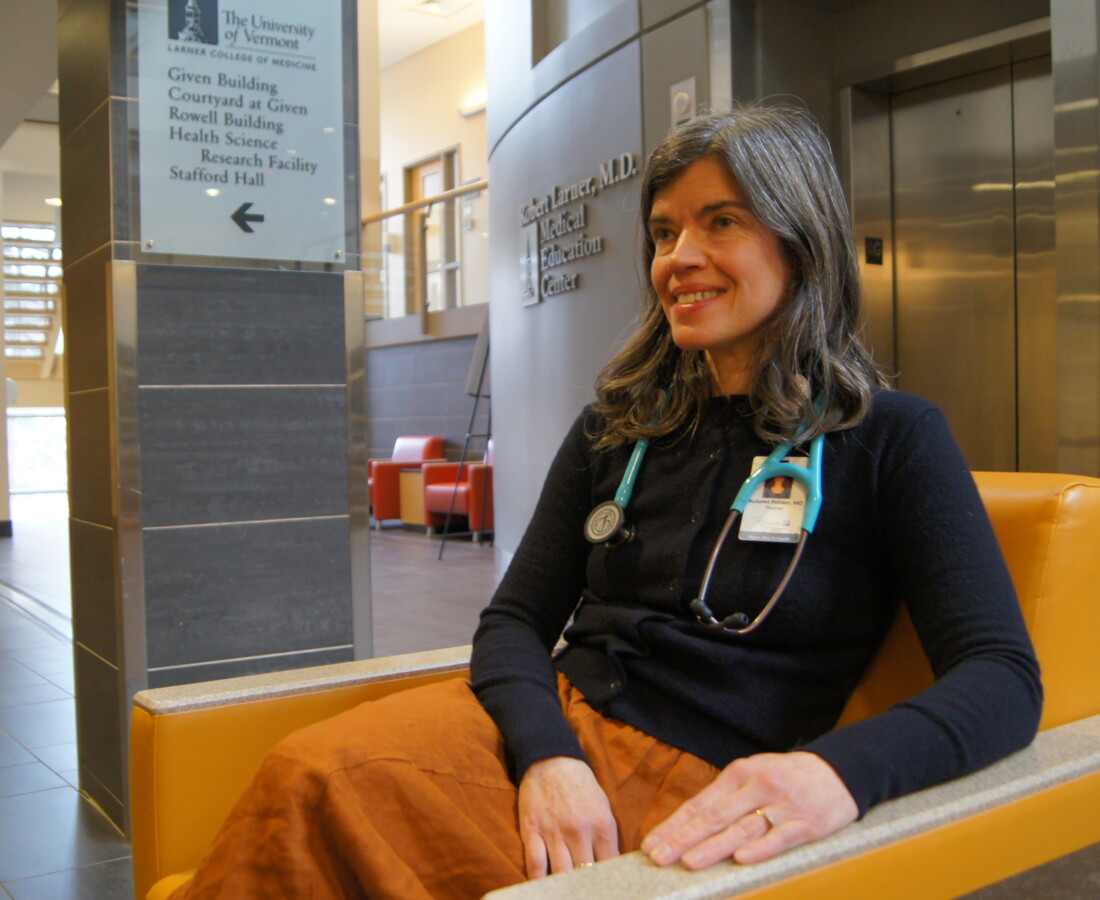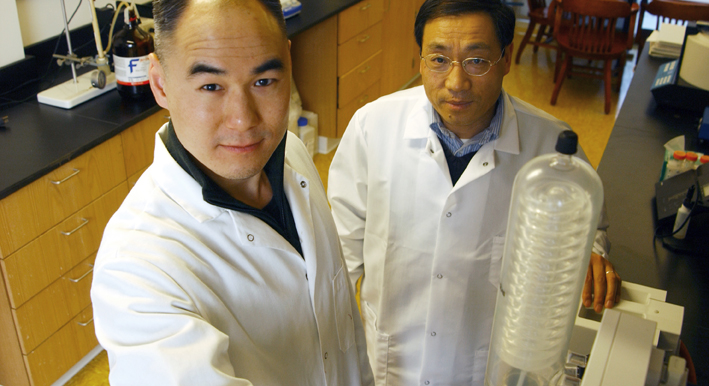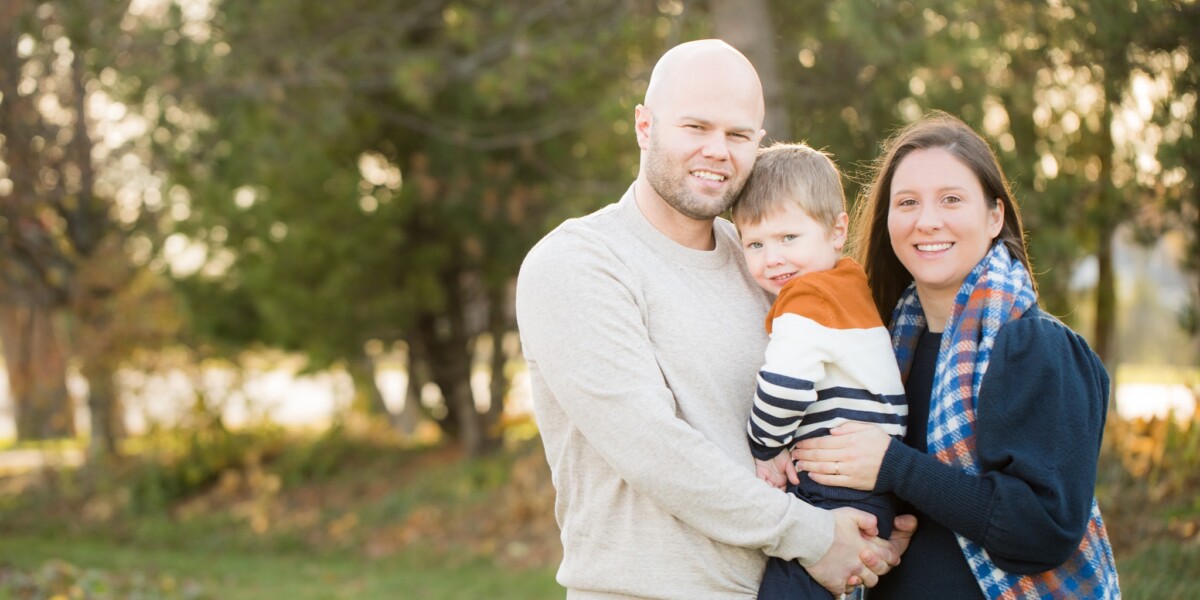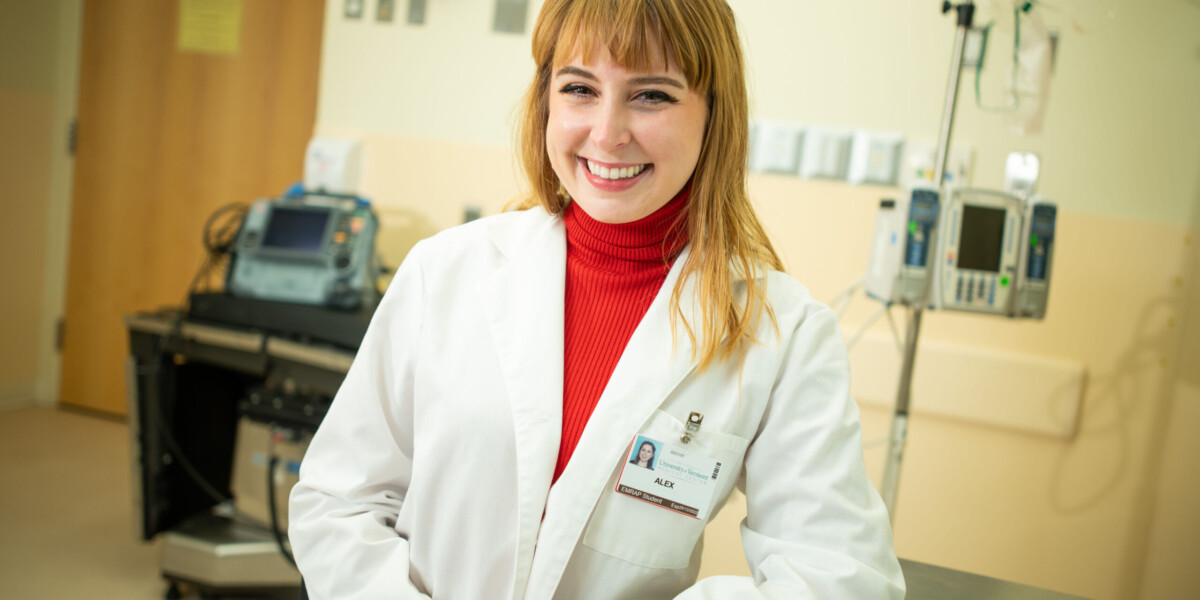Autumn Polidor’s path to medicine began with a realization: Vermont faced a shortage of family doctors, and she wanted to help. That decision led her from a career in the arts to UVM’s Post-Bacc Pre-Med Program, then to medical school at UVM’s Larner College of Medicine, and ultimately to a specialty in addiction treatment.
Working with patients in rural Oregon, she saw firsthand how deeply healthcare is intertwined with poverty, housing insecurity, and substance use disorders. “There’s just so much trauma,” Autumn explains, reflecting on her work at Rogue Community Health, where she is a board-certified addiction medicine specialist. “Without a safe, stable place to live, recovery just isn’t possible.”
Her experiences treating patients recovering from opioid and methamphetamine addiction highlight the systemic barriers to recovery:
“Just having housing feels like a tangible goal,” she says. “But when you also lack mental health care, the challenges compound. Addressing these barriers is as critical as providing care itself.”
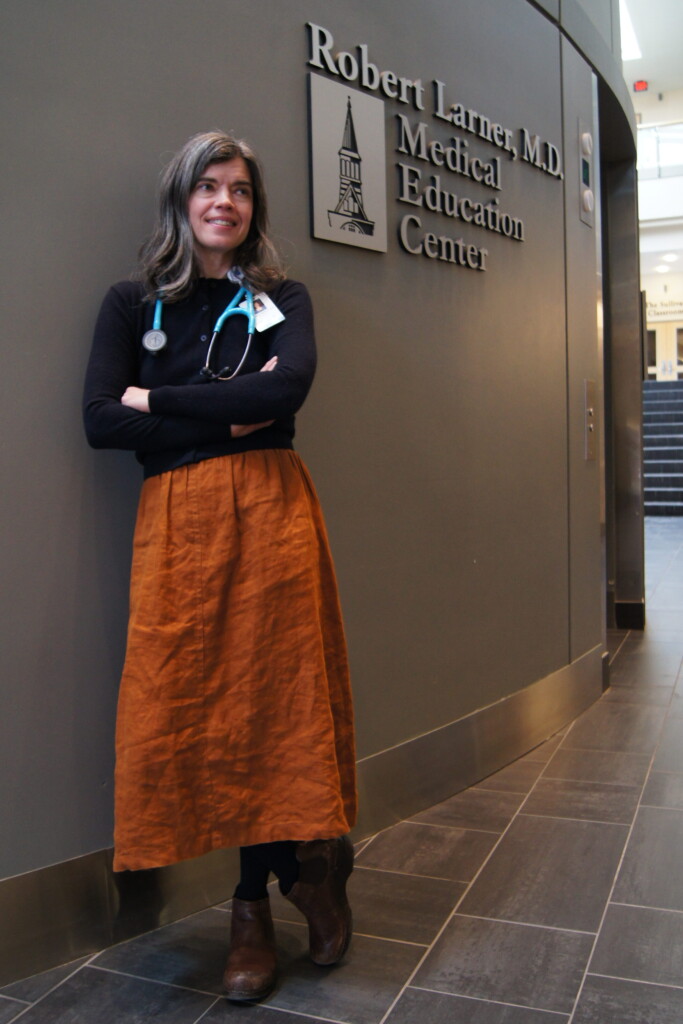
Research supports this: According to the Substance Abuse and Mental Health Services Administration (SAMSHA), “a stable and safe” place to live is included as one of the four major dimensions in promoting and sustaining recovery. Housing First Models, which do not require sobriety as a condition, have been shown to improve long-term housing rates as well as retention in Medication-Assisted Treatment (MAT) programs used to treat people with Opioid Use Disorder (OUD).
At Rogue Community Health, approximately 300 people visited the health center in 2024 for MAT programs. Meanwhile, Oregon continues to see rising overdose rates, with more than half of deaths involving an opioid or a stimulant, according to the Oregon Health Authority. The crisis has hit Vermont hard as well, with fatal overdoses rising 200% over the last decade, according to the Vermont Department of Public Health.
Autumn’s mentor, Dr. Dan Weiner, also a board-certified addiction medicine specialist, encouraged her to pursue specialized training in substance use disorder treatment. “He was like, ‘This is so rewarding. This is one of the most rewarding things I do,’” she recalls. Inspired by his guidance, she gained expertise in evidence-based approaches like medication-assisted treatment and behavioral therapy.
In October 2024, Autumn took the next step in her career, passing the addiction medicine board certification exam. “I want to study like that all the time now because it really progressed my practice in a way I hadn’t anticipated,” she says. The process deepened her understanding of evidence-based treatments like methadone and Suboxone, medications used in opioid replacement therapy, and enhanced her ability to support patients facing complex addiction challenges.
From Studio Art to Medicine: Building the Foundation at UVM
Autumn’s journey into medicine began far from the world of healthcare. As a studio art major at UVM, she explored her creative passions and graduated in the early 2000s. “I wasn’t really sure what I wanted to do,” she says. “I had this very rough idea of becoming an artist, but I couldn’t figure out how to make it feasible.”
After graduation, Autumn worked in a bakery and pursued small creative business ventures. Despite these efforts, the business’s seasonal nature and inconsistent income led her to search for different work.
Her turning point came when she read an article about Vermont’s shortage of family doctors. “I thought, ‘Oh, I could do that.’ And I started looking into pre-med programs,” she explained, ultimately deciding on UVM’s Post-Bacc Pre-Med Program.
“The Post-Bacc program gives you support with an advisor,” Autumn recalls. “I felt like I could trust the guidance I was getting. It was a big change in terms of my identity, going from artist to scientist. But, we were all making this transition and change and doing it in our own ways. It made it feel more manageable and doable.”
Surrounded by peers with diverse backgrounds, Autumn found the support and confidence to pursue medical school. “Most people [in the program] didn’t have a straight-up science background,” she says. “That was confidence-building.”
This pivotal program provided the prerequisites for medical school and a strong support system, helping Autumn navigate the next steps in her career, including attending medical school at UVM and completing a Family Medicine residency at OHSU Cascades East in Klamath Falls, Oregon.
Returning to Vermont with a Remote Connection
Autumn, who grew up in Vermont, returned to the state in 2022 and now serves patients remotely through Rogue Community Health. While she values her current work, she hopes to align her efforts more closely with Vermont’s healthcare needs in the future. “My initial vision was going to be working with people here in the state,” she says. “And I feel like, in some way, I will make that happen. I haven’t figured it out yet.”
Her experiences have made her deeply aware of the barriers and opportunities for change across the country, including in Vermont, where the opioid crisis continues to impact rural and urban communities alike.
“Since the pandemic, regulations around methadone have become more flexible, allowing patients to take home multiple doses instead of requiring daily clinic visits,” Autumn explains. “That change has been really positive because it reduces transportation barriers, gives people more stability in their treatment, and helps them integrate recovery into their daily lives,” she explains.
Autumn reflects on the meaningful impact of her work. “You’re able to help people in such a direct way that it feels like a gift, honestly, to be able to have this job. It really does.”
Autumn’s story is one of thousands made possible by UVM’s Post-Bacc Pre-Med Program.
For 30 years, the program has provided the education and mentorship necessary for aspiring healthcare professionals to pursue careers in medicine, dentistry, nursing, and more. With an 83% medical school matriculation rate, the program remains a vital pathway for those seeking to make a difference in healthcare.
“The Post-Bacc program was a huge turning point for me. It gave me the confidence, guidance, and community I needed to take this leap into medicine. I’ll always be grateful for that support.”
Celebrating 30 Years of UVM’s Post-Bacc Pre-Med Program
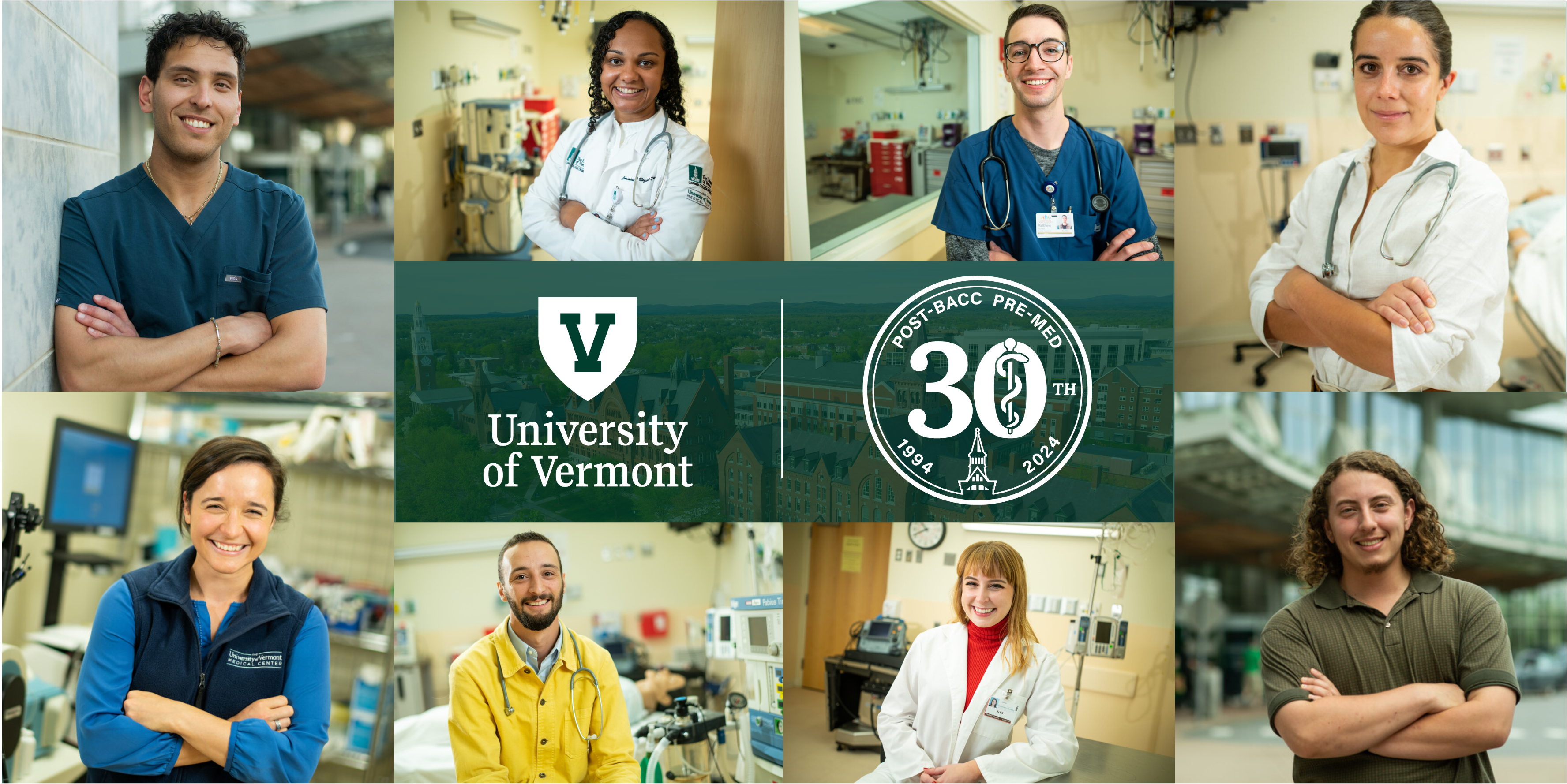
This milestone not only highlights our success but also our commitment to shaping the future of healthcare.
UVM’s innovative Post-Bacc Pre-Med program has transformed countless lives by providing rigorous academics, hands-on clinical experiences, and unwavering support from a dedicated faculty. As we reflect on our journey, we reaffirm our mission to empower the next generation of healthcare leaders.
“Our unique Post-Bacc Pre-Med program continues to impact the future of healthcare through transformative experiences, inspiring mentorship, and academic excellence. This milestone highlights the university’s Professional and Continuing Education division’s longstanding commitment to providing successful pathways for healthcare professionals. PACE prides itself as a critical higher education extension of the university, with a purpose-driven commitment to providing access for students at every stage of their journey. We remain dedicated to continuously innovating our Post-Bacc Pre-Med program as a vital catalyst for med school success, which to date has supported over 4,000 students becoming physicians, veterinarians, dentists, nurse practitioners, physician assistants, and more.”
— Maggie Lambert, MEd, UVM PACE, Post-Bacc Pre-Med Program Director
Read more success stories from our Post-Bacc Pre-Med 30th Anniversary content series.

